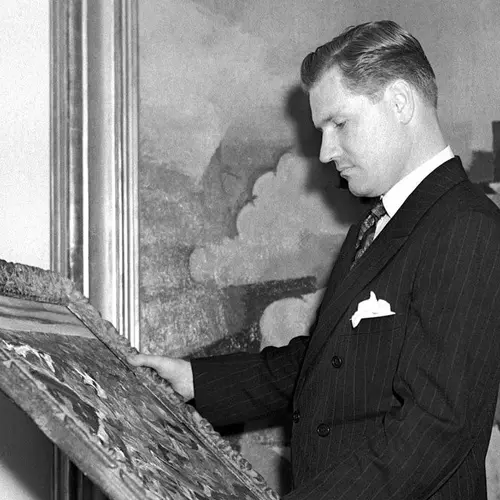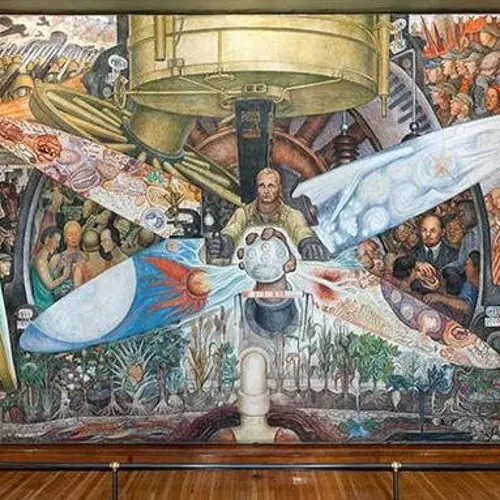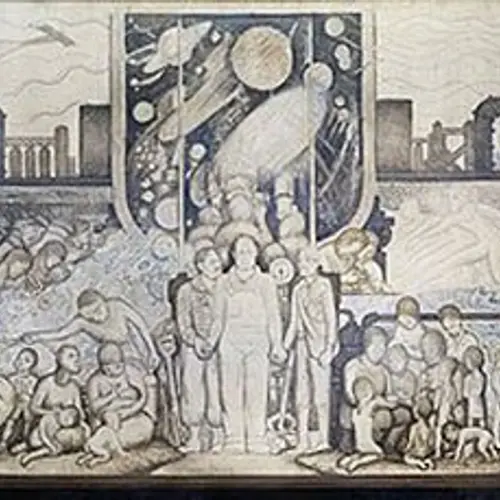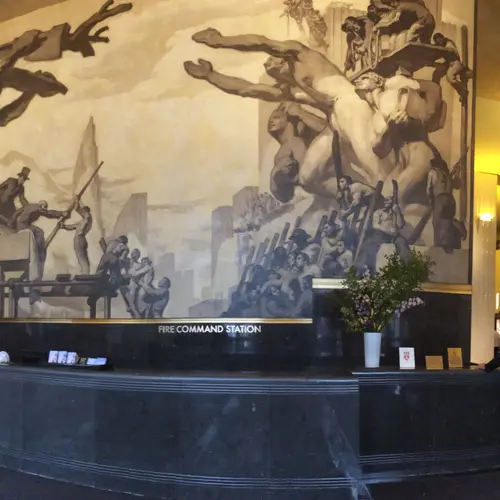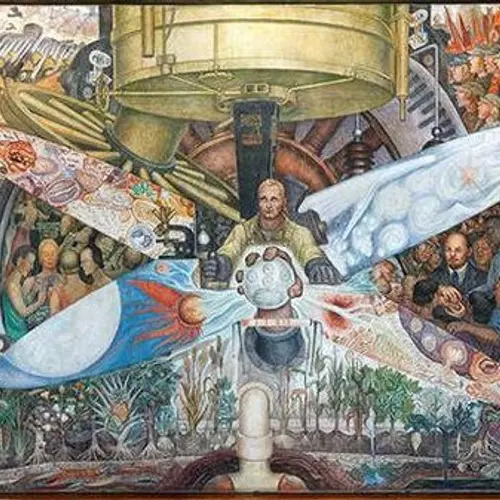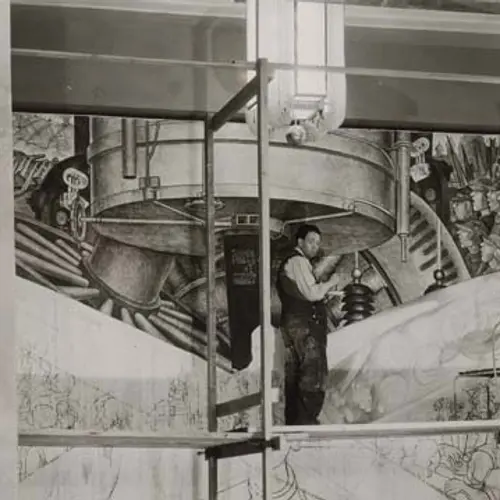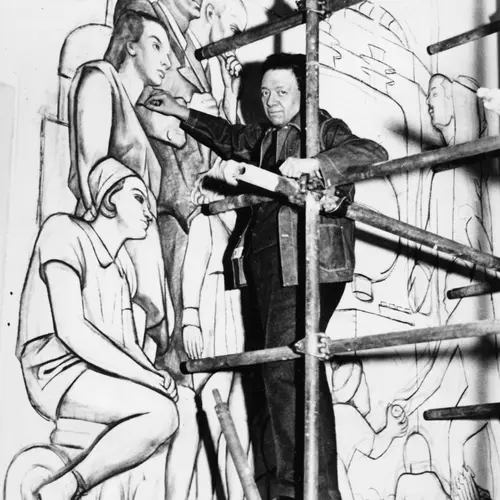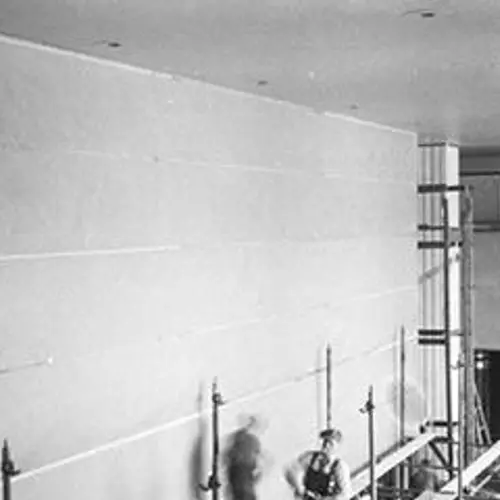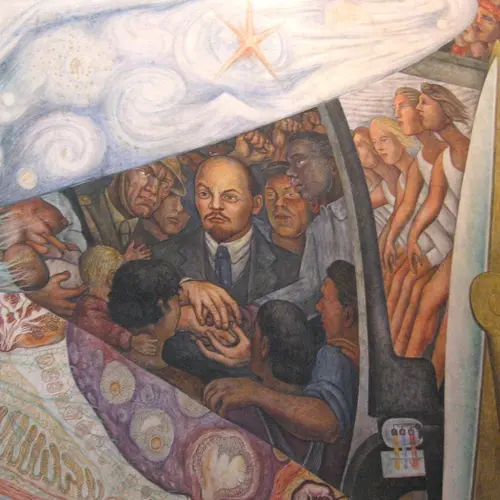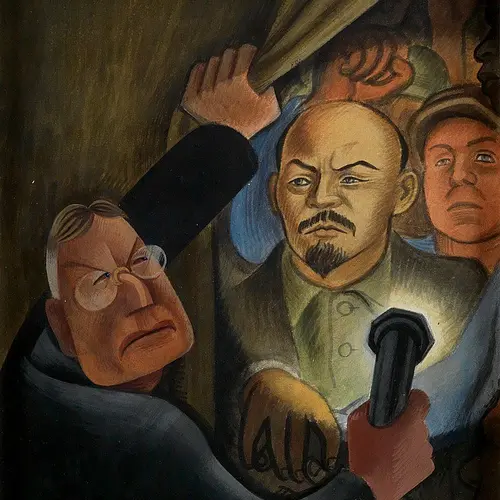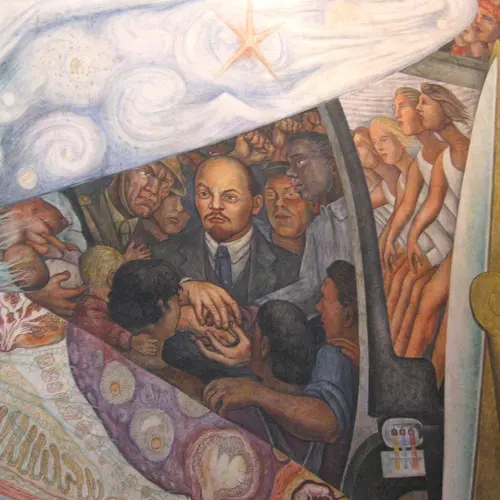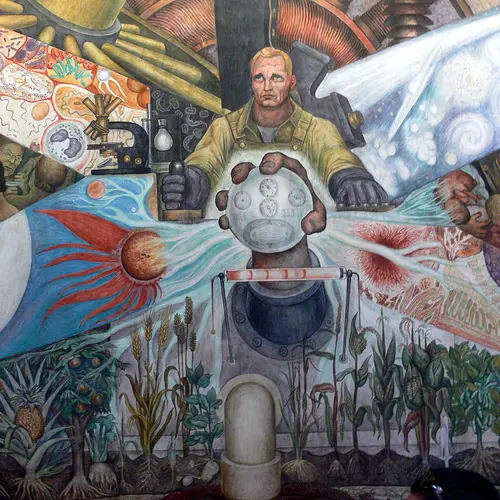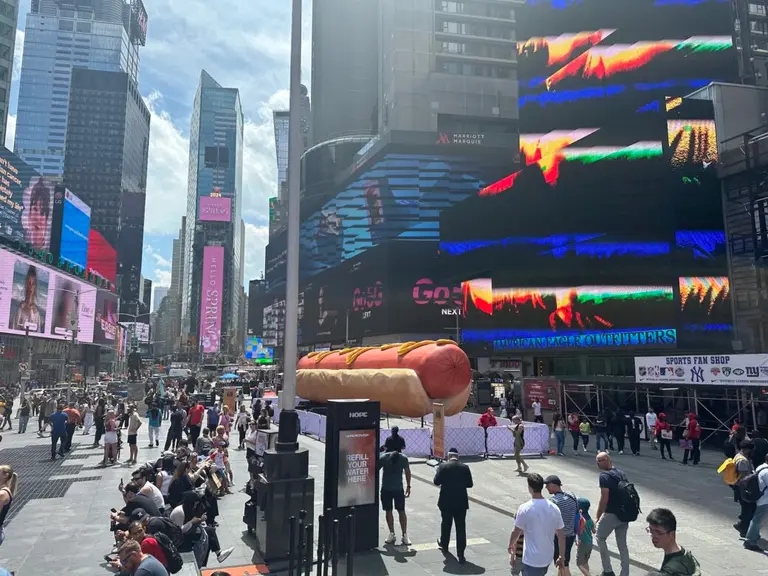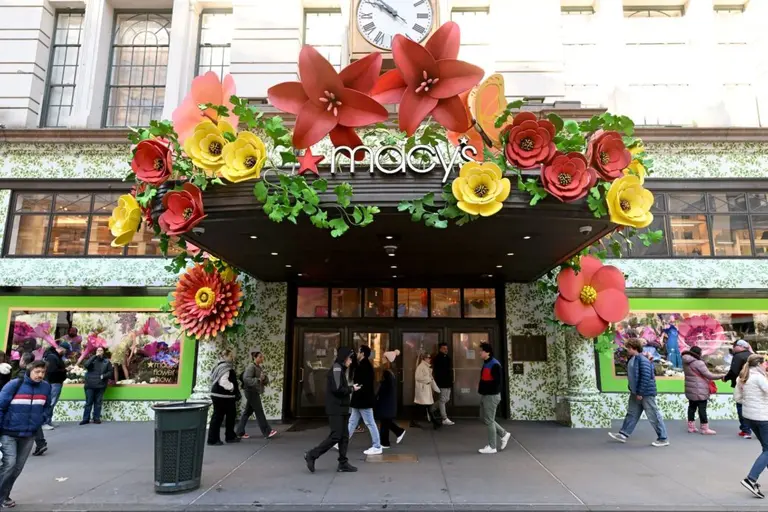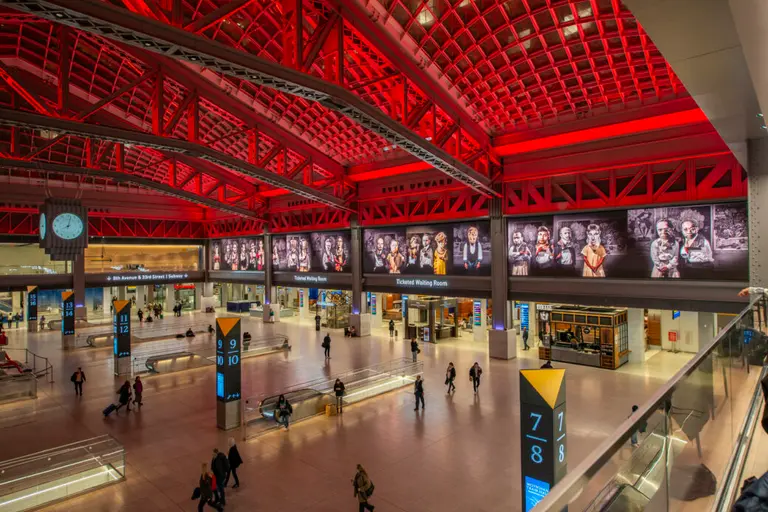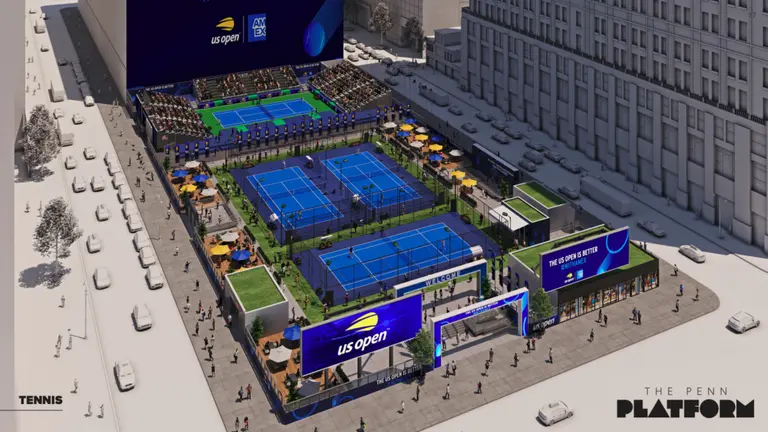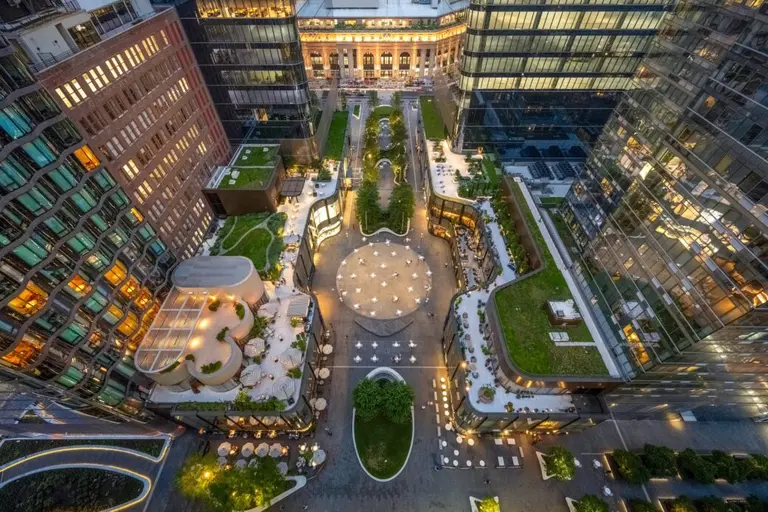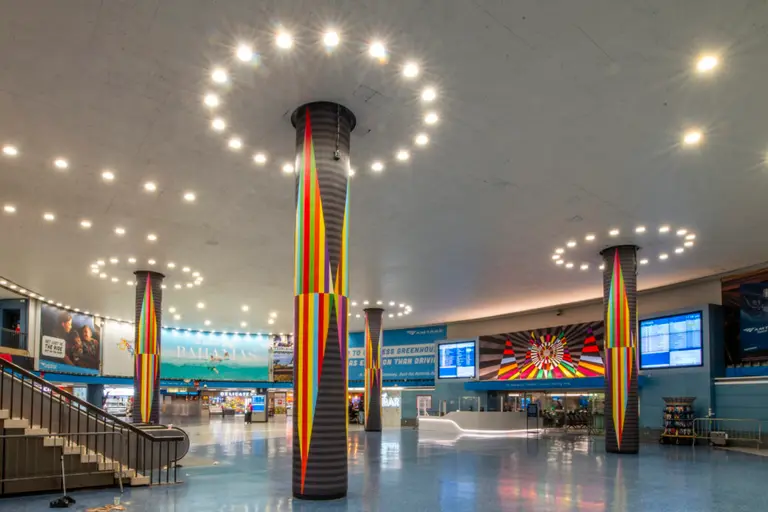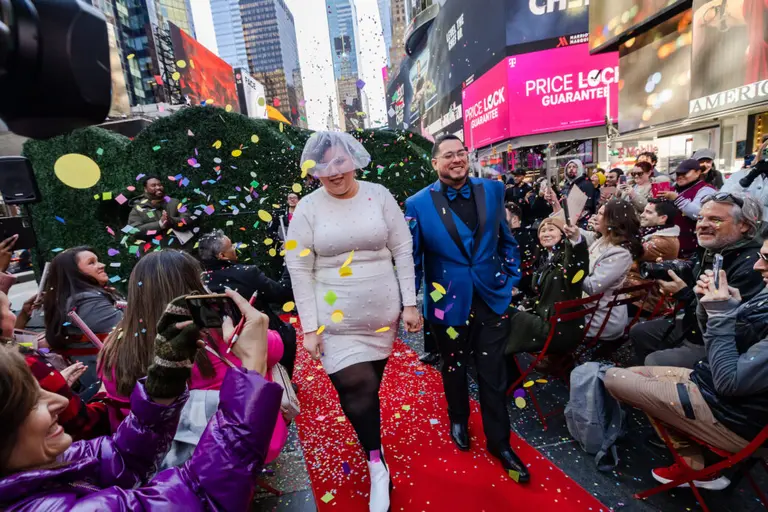Diego Rivera’s psychedelic Rockefeller Center mural was destroyed before it was finished, 1934
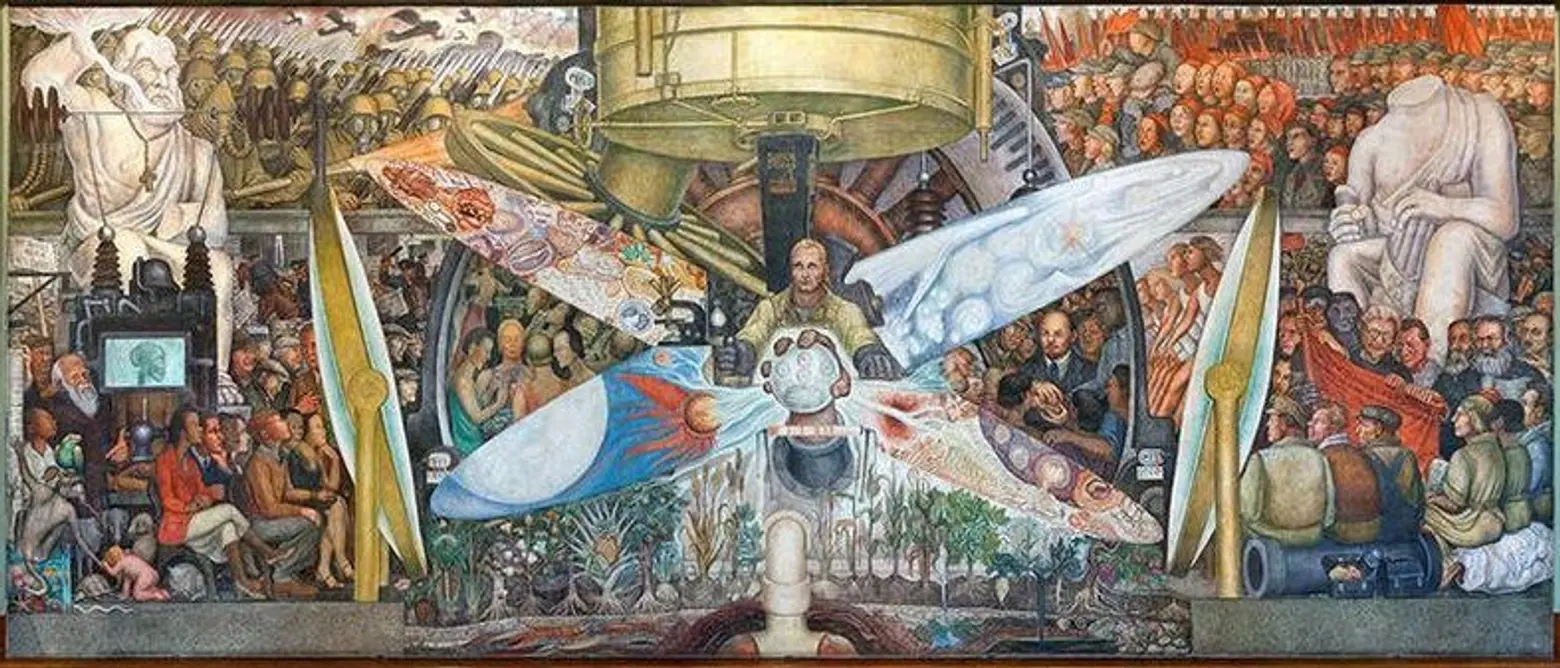
In 1932, Mexican artist Diego Rivera was commissioned by Nelson Rockefeller to add a mural to the soaring lobby of Rockefeller Center. Despite being known for his petulant temper and loyalty to Communism, Rivera was still one of the most highly sought after artists of his time, lauded for his creative genius and his detailed paintings. But politics, artistic vision, power and wealth collided in 1934 when a displeased Rockefeller had the very mural he commissioned from Rivera chiseled off the wall the night before it was to be completed.
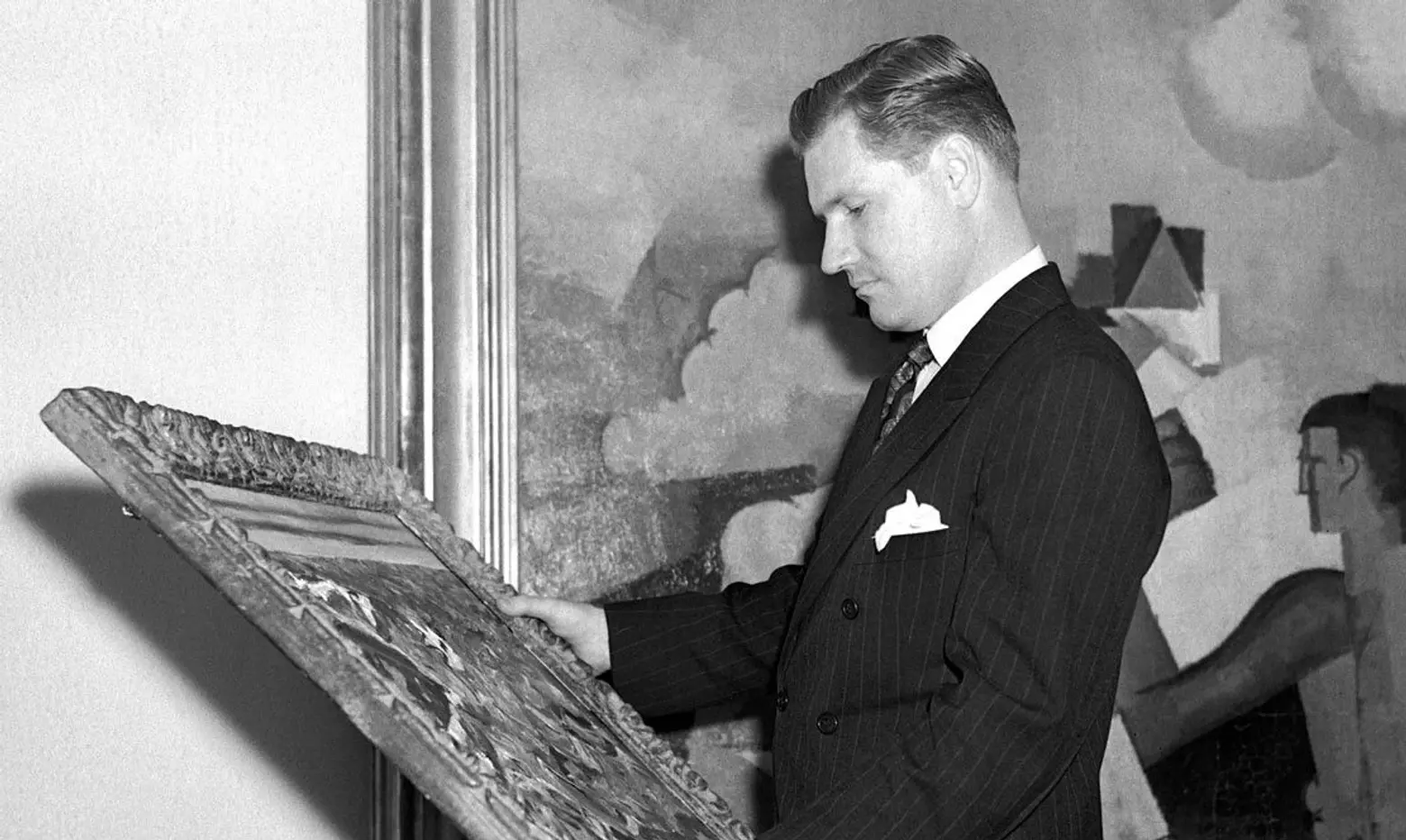 Rockefeller examining a painting at MoMA, 1939
Rockefeller examining a painting at MoMA, 1939
When Nelson D. Rockefeller commissioned Rivera, he was already a prolific collector of Mexican art at the age of 23. The Rockefeller family was aware of Rivera’s leftist politics but still decided to hire him for the project. They were interested in having pieces from the best artists of the time, and they felt Rivera’s work had both artistic and commercial value. Rockefeller wanted a painting that would make people pause and think. And so to match the building’s theme of new frontiers, he gave Rivera a theme of “Man at the Crossroads Looking with Hope and High Vision to the Choosing of a New and Better Future.”
 Diego Rivera’s early sketch of his mural for Rockefeller Center, 1931. Courtesy Museo Frida Khalo
Diego Rivera’s early sketch of his mural for Rockefeller Center, 1931. Courtesy Museo Frida Khalo
Rivera initially presented a sketch that appeared to align with the theme and abided by the three-page contract that outlined the expectations of the building management. He proposed a 63-foot-long portrait of workers facing symbolic crossroads of industry, science, socialism and capitalism. Rivera’s composition depicted aspects of contemporary social and scientific culture. Although the mural may seem chaotic at first glance, the symbolism and composition is extremely well-balanced in both the preliminary sketch and revised fresco version.
 Recreated mural titled “Man, Controller of the Universe” by Diego Rivera. Courtesy Museo Frida Khalo
Recreated mural titled “Man, Controller of the Universe” by Diego Rivera. Courtesy Museo Frida Khalo
In the center of the mural a workman controls machinery. A giant hand emerges in the foreground holding an orb that represents the recombination of atoms and dividing cells in acts of chemical and biological generation. From the central figure, four propeller-like shapes stretch outward to each corner, depicting arcs of light created by giant lenses (side views) that anchor the left and right edges of the space. Within these, cosmic and biological forces, such as exploding suns and cell-forms, represent discoveries made possible by the telescope and the microscope.
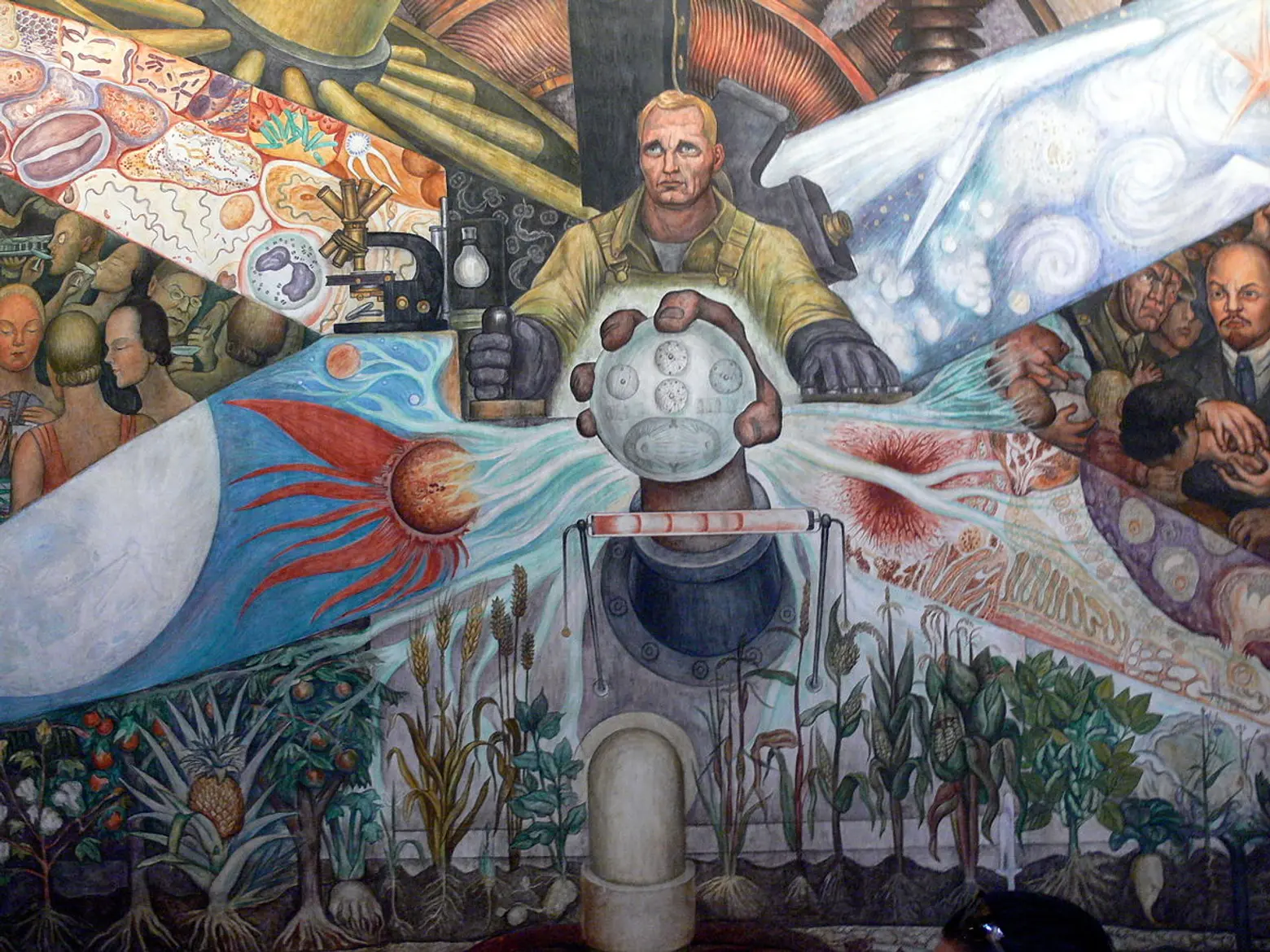 Diego Rivera, center detail of “Man, Controller of the Universe”, Mexico 1934. Recreation of “Man at the Crossroads” at Rockefeller Center, NYC
Diego Rivera, center detail of “Man, Controller of the Universe”, Mexico 1934. Recreation of “Man at the Crossroads” at Rockefeller Center, NYC
Scenes of modern social life such as wealthy society women playing cards and smoking are on the left. To the right of the orb, Lenin is holding hands with a multi-racial group of workers. Soldiers in olive green wearing gas masks with war planes hovering above them occupy the top left. On the upper right, women wearing red scarves appear to be reacting to the gas masks on the other side of the mural, which adds a unique dialogue within the mural that creates a sense of visual motion from side to side.
The chiseled classical statue on the left depicts an angry Jupiter whose raised hand has been severed by lightning. The classical statue on the right is a headless seated Caesar. According to Rivera, they represent the replacement of superstition by the scientific mastery of nature—and the overthrow of authoritarian rule by liberated workers.
The bottom part of the painting was going to symbolize the controlled growth of natural resources through a variety of plants emerging from their roots, visible in a cut-away view under the soil. This section of the mural was never completed and only exists in the later recreation Rivera worked on in Mexico City.
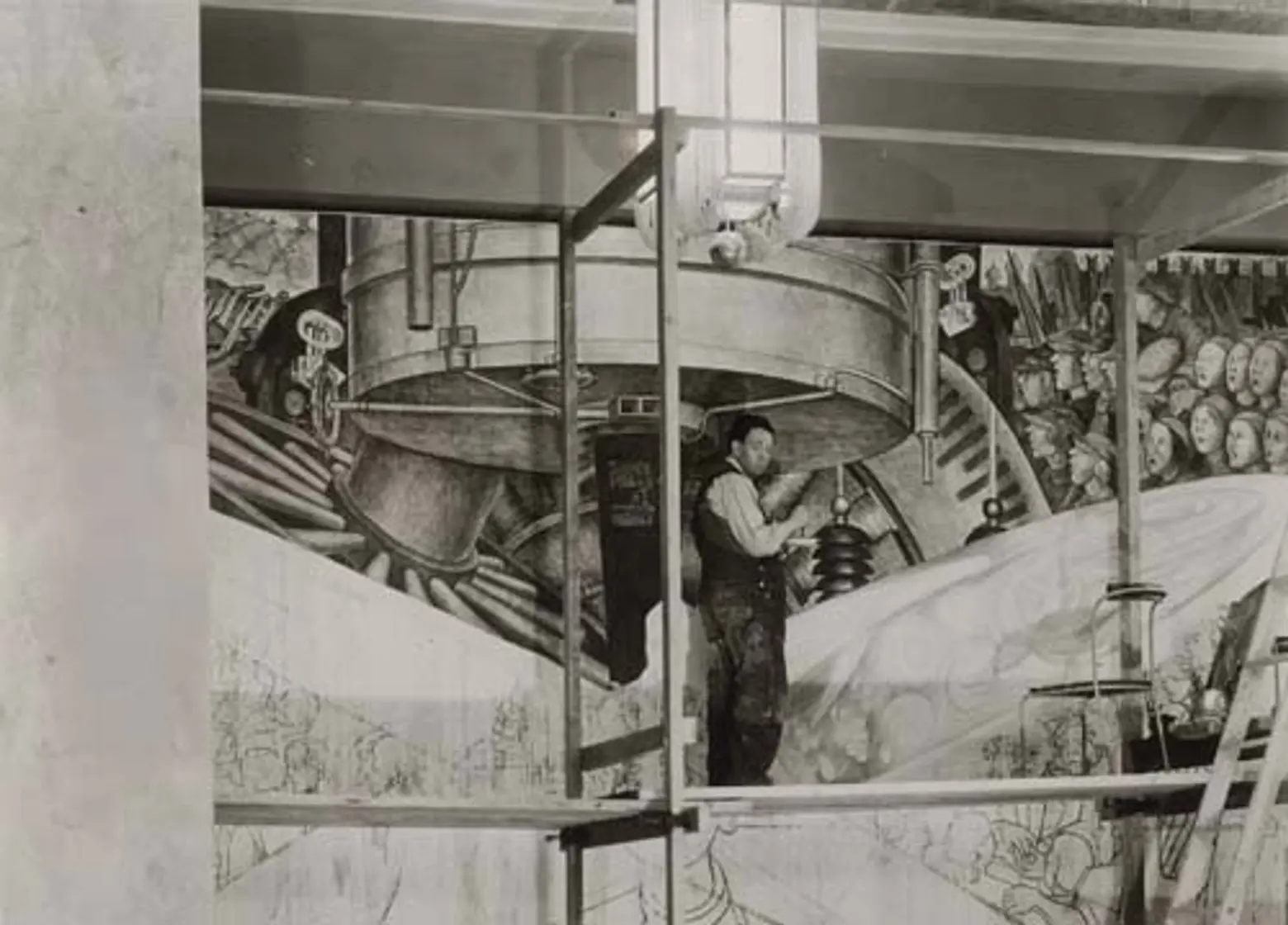 Diego Rivera working on mural in Rockefeller Center in 1933. Photo by Jose Rafael Bejarano. Silver print
Diego Rivera working on mural in Rockefeller Center in 1933. Photo by Jose Rafael Bejarano. Silver print
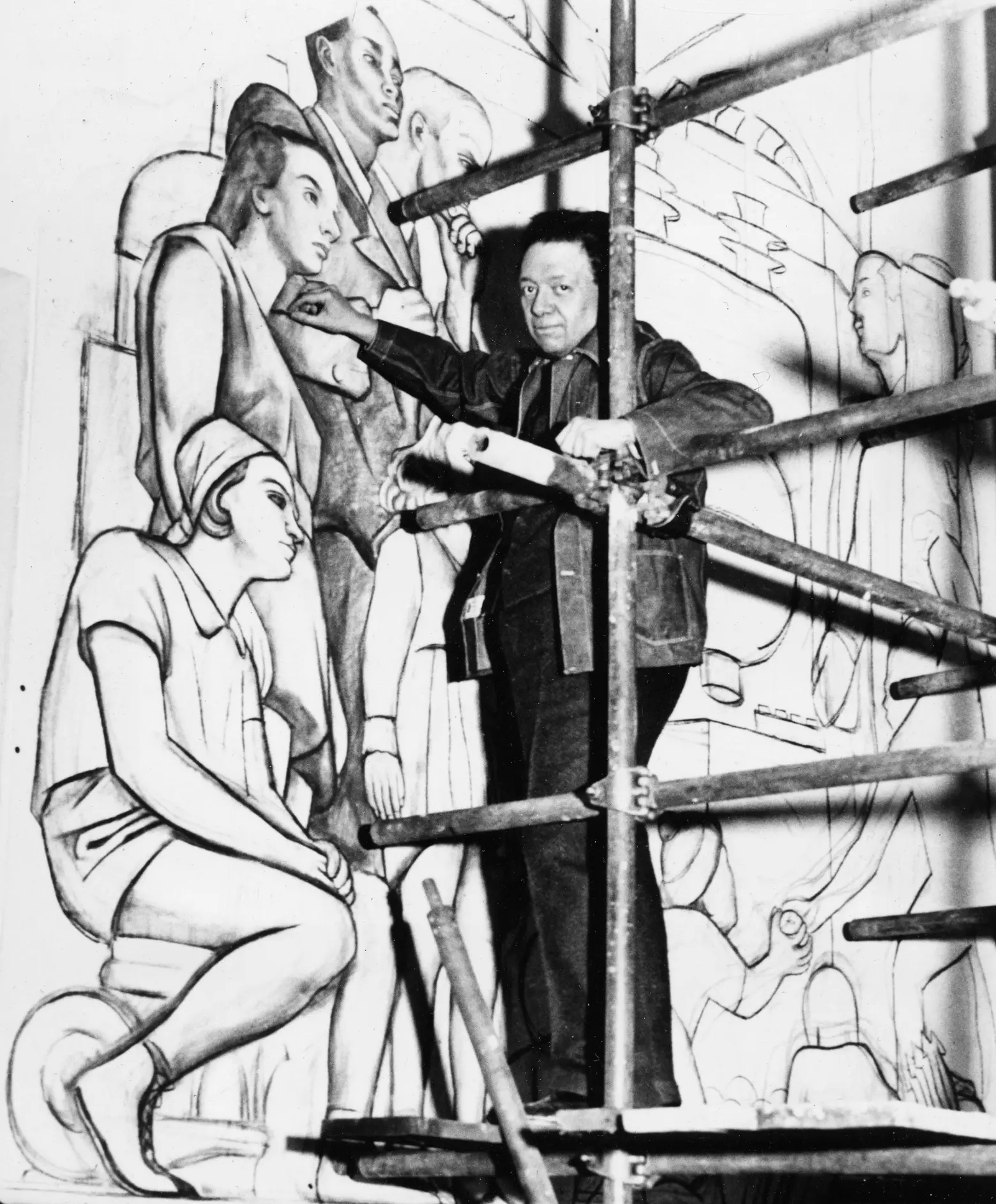 Diego Rivera working on panel of “Man at the Crossroads” mural in Rockefeller Center, NYC in 1933
Diego Rivera working on panel of “Man at the Crossroads” mural in Rockefeller Center, NYC in 1933
Unsurprisingly, building managers were infuriated with the addition of Soviet Communist Vladimir Lenin and the negative publicity it was attracting, so they ordered Rivera to remove the offending image. Rivera refused defiantly, claiming it impinged on his creative vision, but then offered to add a portrait of Abraham Lincoln on the opposing side for balance from a political perspective. In the film Frida (2002), the encounter was depicted as Rivera shouting at Rockefeller stating it was his painting, with Rockefeller responding with “It’s my wall!”
Suspecting more backlash would come from the situation, Rivera wanted to have the work photographed before anything happened to it. Building security squashed the attempts to formally shoot the mural, so he had his assistant, Lucienne Bloch, take photos quickly.
And Rivera’s hunch was correct. The building managers declined his proposed change, paid his full fee of $21,000, tossed him from the site, and then hid the mural behind a massive drape. Despite negotiations to transfer the work to the Museum of Modern Art, and demonstrations by Rivera supporters, on February 10th, 1934, under the veil of secrecy, workmen carrying axes demolished the mural. Rivera responded by stating, “In destroying my paintings the Rockefellers have committed an act of cultural vandalism.” Rivera was open about his opinion, which exacerbated the feud.
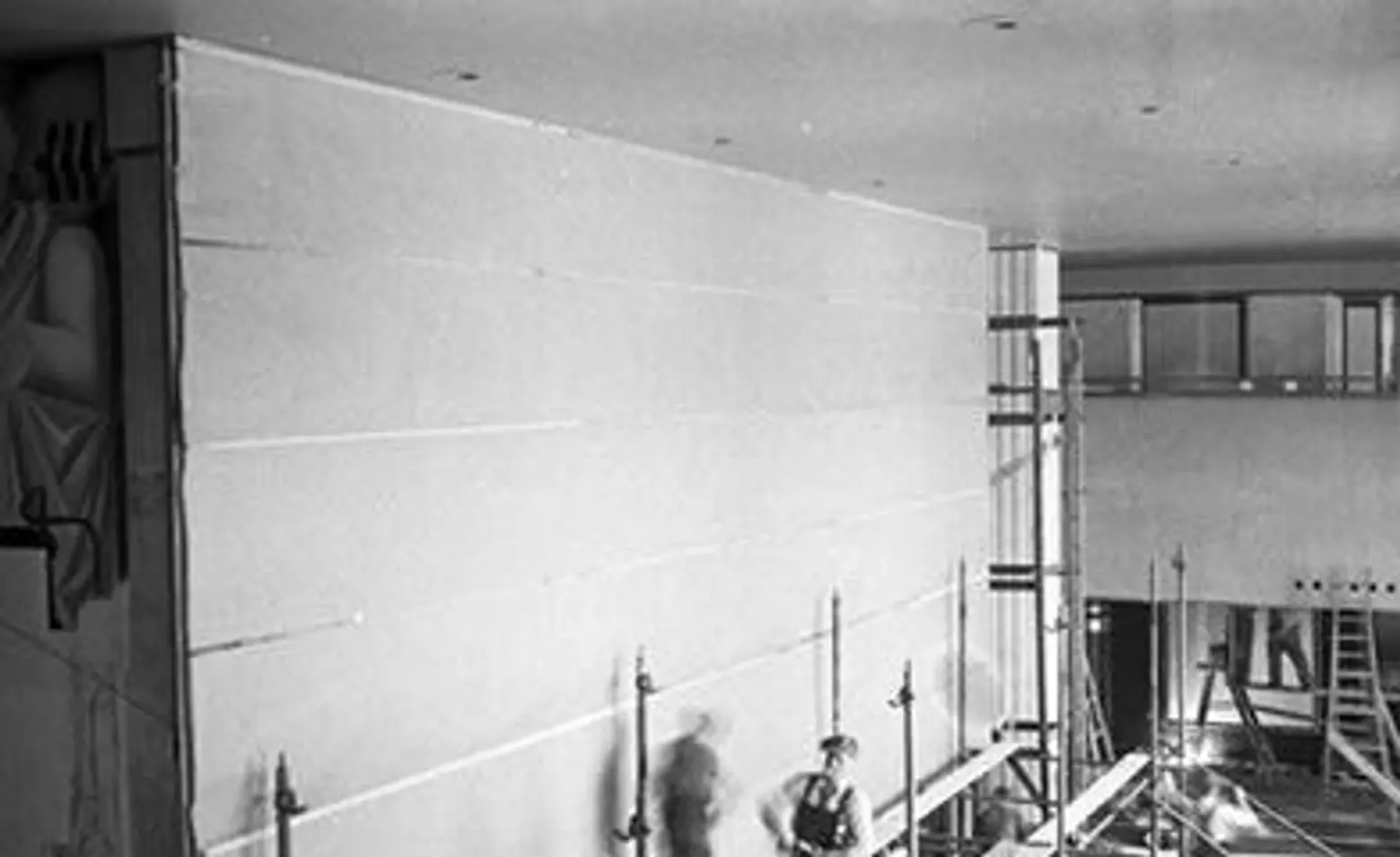 Diego Rivera’s mural covered by workmen at Rockefeller Center 1934. Photo by Lucienne Bloch, Rivera’s assistant at the time
Diego Rivera’s mural covered by workmen at Rockefeller Center 1934. Photo by Lucienne Bloch, Rivera’s assistant at the time
Bloch’s black and white photos are the only images that exist of the original, incomplete mural. Using the images, Rivera repainted the composition in Mexico under the variant title “Man, Controller of the Universe.” After “Man at a Crossroads” was removed, it was replaced with a larger mural by the Catalan artist Jose Maria Sert titled “American Progress.” It can still be found in the Rockefeller building today.
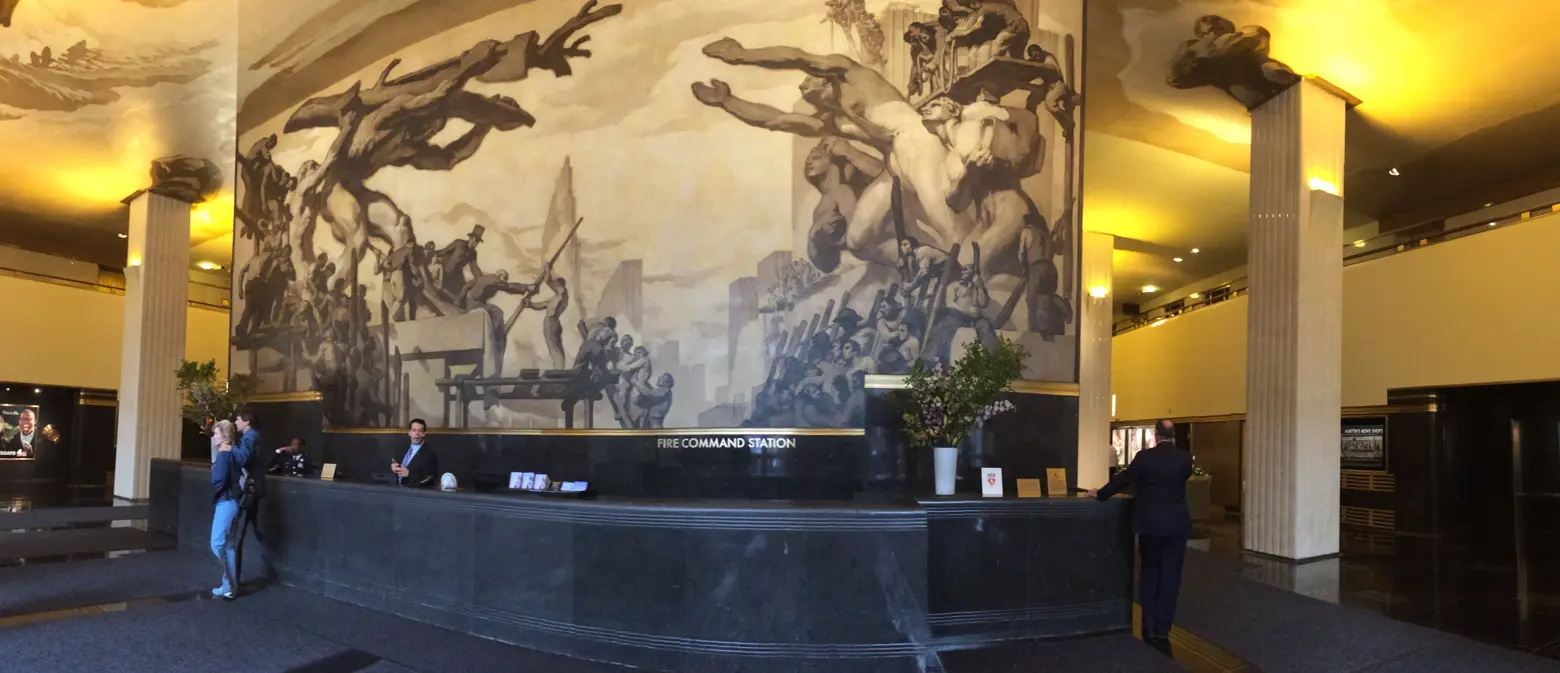 “American Progress” by Jose Maria Cert. Mural that replaced Rivera’s mural in Rockefeller Center.
“American Progress” by Jose Maria Cert. Mural that replaced Rivera’s mural in Rockefeller Center.
The situation is considered to be one of the most contentious rivalries of the art world with its unresolved collision of egos, wealth and political ideologies. The polarizing clash was exciting to watch as it played out, and it led other artist to use it for their own social commentary. Miguel Covarrubias, a friend of Rivera and Frida Khalo, created a caricature in 1933 of Rockefeller discovering the portrait of Lenin in the mural. The cartoon pokes fun at the fiasco by taking a swipe at Rockefeller’s anger.
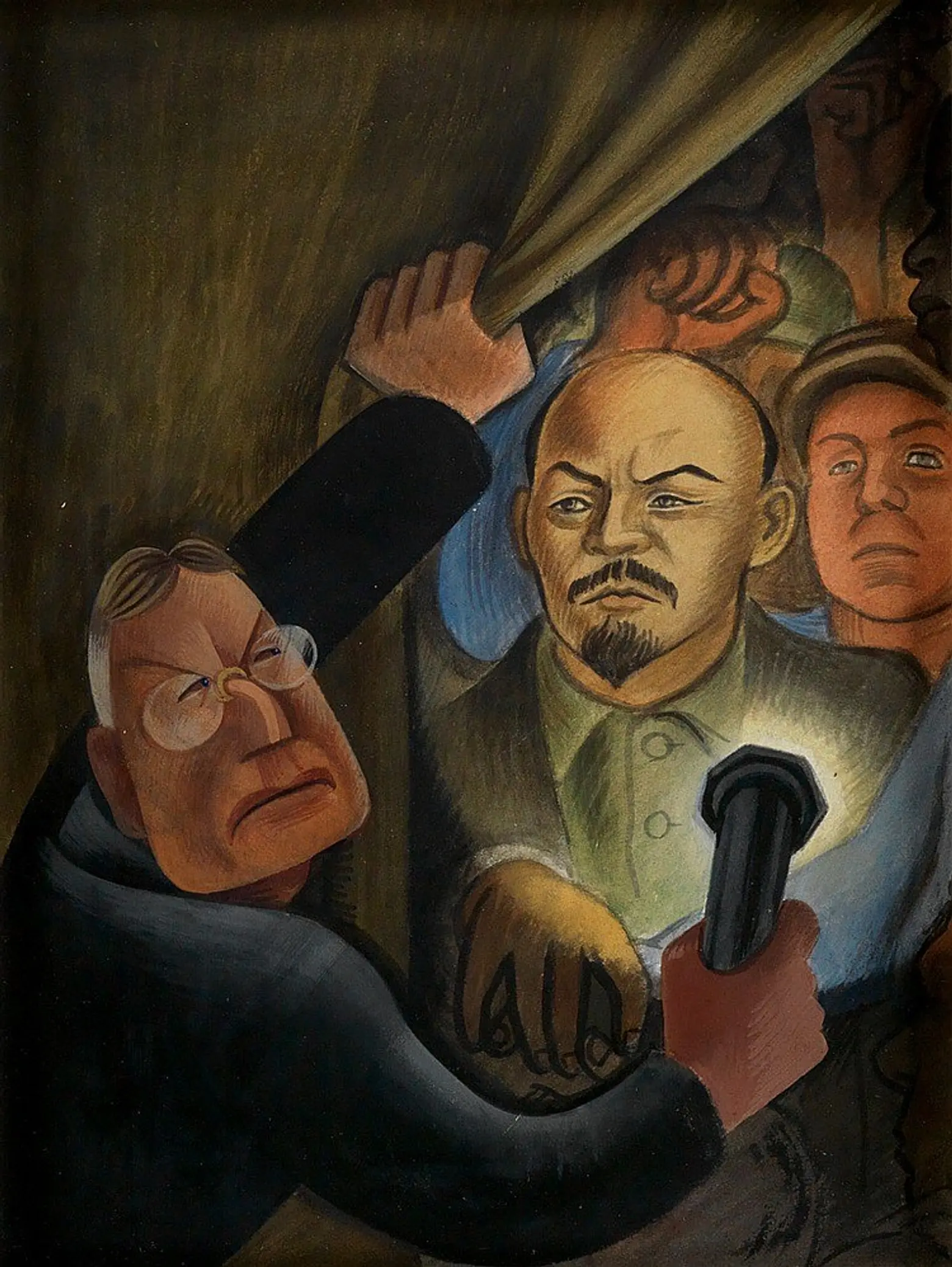 “Rockefeller Discovering the Lenin in Rivera Mural”, by Miguel Covarrubia. Gouache and ink on paper, 1933. A caricature of John D. Rockefeller, Jr. discovering the controversial portrait of the Soviet Union leader Vladimir Lenin in Rivera’s mural, Man at the Crossroads, at Rockefeller Center, New York
“Rockefeller Discovering the Lenin in Rivera Mural”, by Miguel Covarrubia. Gouache and ink on paper, 1933. A caricature of John D. Rockefeller, Jr. discovering the controversial portrait of the Soviet Union leader Vladimir Lenin in Rivera’s mural, Man at the Crossroads, at Rockefeller Center, New York
New York loves scandals, especially if it involves artists rising up against creative censorship. As recently as 2014, New York would witness a similar culture war play out in the public with the acrimonious relationship between (mural/graffiti) artists and property owner with the demolition of 5Pointz in Queens. Rivera never worked in the United States again but continued to be politically and artistically active until his death in 1957.
RELATED:
